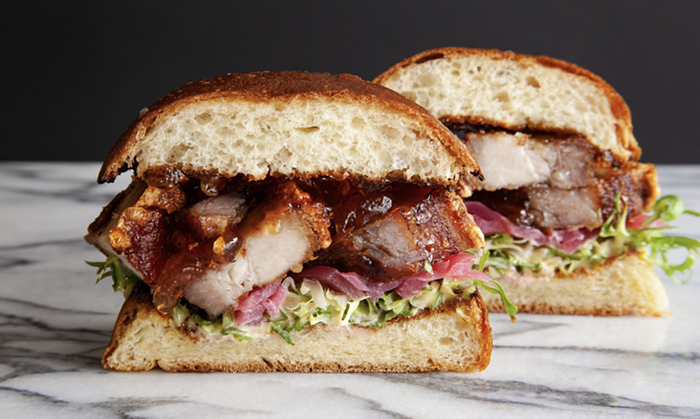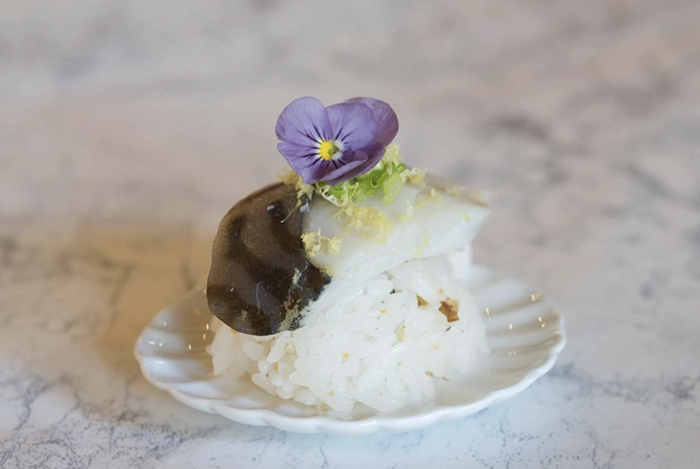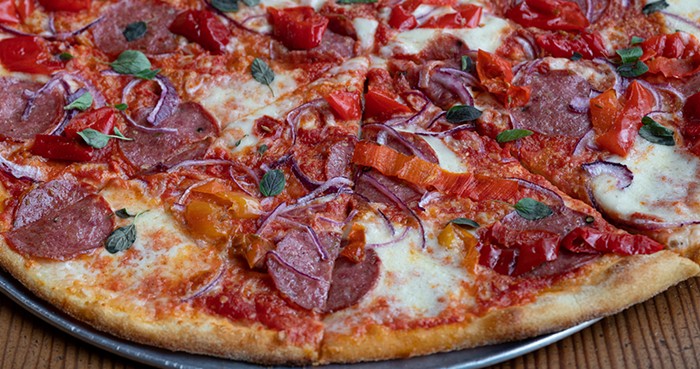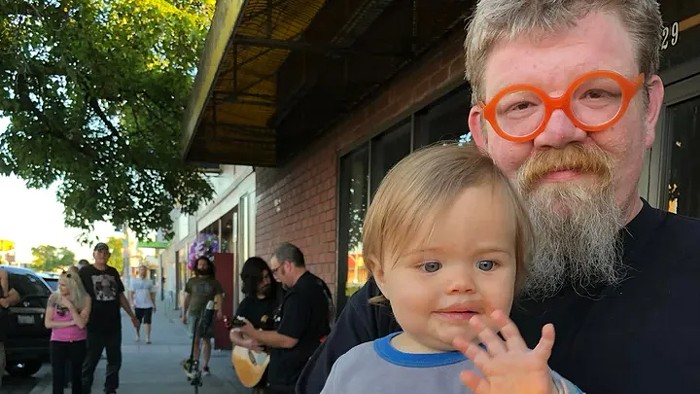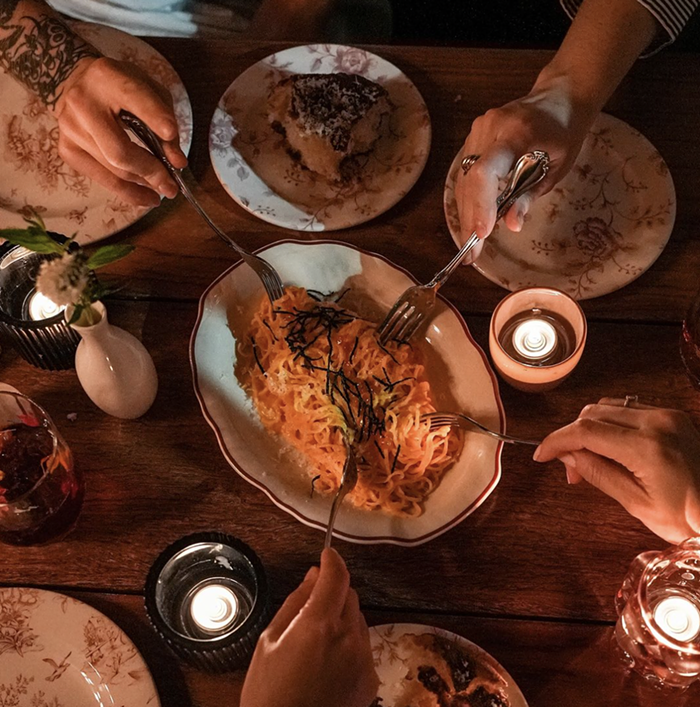2801 Alaskan Way, Pier 70, 267-0236.
Sun-Wed 11 am-11 pm; Thurs-Sat 11-1 am.
The other night at Rippe's I counted six people wearing jeans within my field of vision. This is not irrelevant, since Rippe's advertises itself as "Seattle's Blue Jeans Steakhouse." Why they would need to do this is a bit of a mystery, as most everything in Seattle is Blue Jeans--city hall is Blue Jeans, the museum is Blue Jeans, even the opera is Blue Jeans, as far as I can tell. Blue Jeans from dawn to dusk, with nary a cocktail dress in sight.
The disconnect about Rippe's is best summed up by this contrast I saw on Alaskan Way: a freight train chugging past, stately and slow, and a guy jogging by in the opposite direction, wearing a university-style sweatshirt with the name of a California winery on it. Inside, you have exposed rafters and ducts, with a sort of funked-up corporate look from the light fixtures on down. Next to the door, there's a bulldog sculpture-thing left over from when the Real World inhabited Pier 70, which makes you recall all sorts of other mythical, not-quite-real spots, like the concert set that was fabricated when it turned out that none of the clubs wanted MTV mucking around in them.
It doesn't matter, because Rippe's gets a lot of things right, really right, like a bright-tasting cocktail sauce with horseradish and celery (not just tarted-up ketchup), and a Roquefort dressing with capers and little crumbles of cheese. On the other hand, the Dungeness crab ($8.95) under the cocktail sauce was watery and tasteless (except for a few bites of claw meat), and there was not enough of it; the salad under the Roquefort was indifferent, with rock-hard tomatoes.
Fortunately, they get the meat really right. (They should, considering the team behind Rippe's is the team behind Belltown's swelligant El Gaucho.) I have a terminal blind spot about primal cuts of meat, and can never remember what I like, although I know I don't like filet mignon--it's too lean and mushy. I asked my waiter to recommend something with more fat, and he pointed me happily toward the rib chop, kindly adding that it's more appropriate to refer to "marbling" than "fat," but energetically agreeing when I protested this bit of culinary correctness.
I ordered the rib chop ($23.95), and I ordered it rare. They are not afraid of rare at Rippe's--it was nearly what the French call bleu. I put all thoughts of prions out of my mind and ate. Silky, beefy, and tender but not the least bit mushy. There was no need, as E. F. Benson's Miss Mapp did, to chew manfully until her jaws gave out. It was served with a deep, rich, peppery beef demi-glace, which I learned, thanks to our excellent waiter, is what you serve with a cowboy steak. My husband ordered a T-bone ($25.95), which means you get both strip and tenderloin, and he ordered it medium-rare. He ate the entire thing and then sat back stunned in his seat. I tasted a scrap he had missed from the strip side of the steak; I liked it, but as it turns out, I am more of a rib-chop girl.
This perfect texture and full taste is due, as I understand it, to a full 28 days of dry aging, which almost anyone can explain to you better than I can, although I know, thanks to Jeffrey Steingarten's It Must've Been Something I Ate, that it takes at least three weeks for meat to dry-age to perfect tenderness, and after that it develops flavor. Steingarten prefers meat aged six weeks, after which it gets what's known as "high," but the four-week version tastes pretty good to me.
On the way home, as I tried to keep from dozing off in the car, I was reminded of Joseph Mitchell's excellent essay on the old New York steak dinner (or "beefsteak"), in which he mourned, in his polite Southern fashion, the days when "a man [would] do away with more than six pounds of meat and thirty glasses of beer." What changed the etiquette of the beefsteak was the arrival of women, newly enfranchised, because "women do not esteem a glutton." Except when the woman is a glutton, I suppose.
